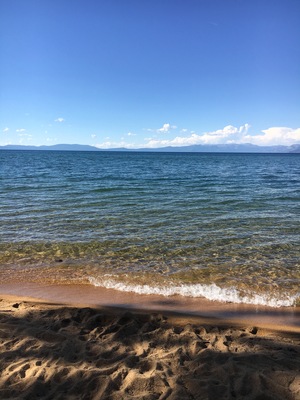May 21, 2019
The original menu on the front page was lacking. It only contained a list of the
categories of each post I’ve written. However, after adding support for series
of posts, I think it would be nice to show the series’ titles in the menu as
well. This required making a custom plugin jekyll-groupby and the creation of
a new layout called group to display groups of items. The result of the code
in this post leads to the menu on the sidebar.
Cambre: An exploration into RAII
Apr 30, 2019
In the previous introduction to Cambre, I mentioned that I would be using
GLFW, GLEW, and GLM for handling different aspects of the program. These
libraries are great, but I would also like to use a recent C++ version to
organize the code I write. Because the three aforementioned libraries are all
C style libraries, that means that I have to do a little bit of extra wrangling
in order to make them fit my application’s organization.
Making Cambre: a voxel-based open-world game
Feb 1, 2019
In my day-to-day work, I don’t get to work too much with user-facing code. Such is the world of embedded programming. So I decided to start a new project to explore a different aspect of software. I also want to seriously consider the architecture of this project, so not all of the posts will be directly related to the implementation of the project. Lastly, I want to have fun making this project, because otherwise there’s no point.
Sep 1, 2018
This article describes how to write code that is available in both C and C++. The C++ website has a great FAQ section on how to mix C and C++; this article shows a concrete example for implementation.

Expanding this Site with Images
Aug 16, 2018
In order to make the site stand out, and also to support media types most common to the internet, I’ve quickly styled up a featured image container. This code uses the assets plugin, and results in a simple styled image at the beginning of each post.
Mar 19, 2018
One aspect of this static site that was looking bland was the code snippets first presented in Customizing This Site. Originally, these snippets were presented as black text on a grey background. To improve the visual appearance of code blocks, I decided to add code syntax highlighting with Nord.
Adding Support for a Series of Posts
Mar 8, 2018
Sometimes, it makes sense to relate posts in a series. A continuation of a story or an expansion of a project are all reasons to continue a post. This post is part of the series Developing a Custom Theme, which details all of the steps that resulted in the creation of this site’s theme.
Mar 8, 2018
In order to remember how to correctly build this site, I decided to use Rake.
Rake is Ruby’s version of Make: by specifying targets to build and how to build
them, I can easily perform a complex series of commands to manage this site.
Because Rake is so versatile in declaring targets, I use it to create new posts,
run continuous integration, and even generate SSL Certificates for my local
development environment.
Customizing the Design of this Site
Jan 22, 2018
The default Jekyll Site uses the minima theme. This theme is great for getting
started with the basic content of the site, but I prefer to know what’s going
on behind the curtain. What exactly does Jekyll use to convert my markdown files
into a complete static site? To learn about this, I made a custom theme for this
site. The theme’s source code is posted on GitHub.
Dec 31, 2017
So I just setup a new blog for myself, and after looking at the numerous options for publishing content on the web, I decided a static site would suit my needs best. I don’t imagine this site will grow to large numbers, and I don’t plan on hosting huge amounts of media (big pictures and large video files). Plus I’ve dealt with WordPress enough to know that I don’t want to stray anywhere near that beast of a CMS. But mostly, being the programmer that I am, I find managing a simple repository with files containing all of the necessary information for this site much easier than throwing everything into a database and tweaking the inner workings of that. Operating Systems are better suited to handle files and folders rather than databases.
See More Posts
